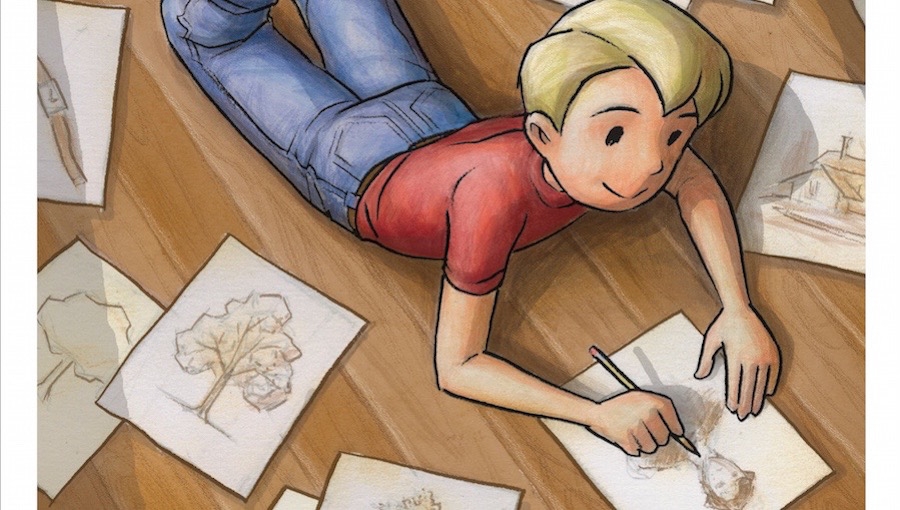I spend a considerable amount of time these days trying to think like a 9-year-old. This is because I have a 9-year-old tromping around my house, and it’s a very good thing to try to predict what fascinating, new mischief he might be planning. Actually achieving some precognition in this matter, though, is difficult when the target changes their mind so abruptly.
He likes something one day and hates it the next. He’s interested in something one minute and bored with it the next. It can be an daunting quest to get him to try a new hobby or stick with something long enough to actually learn a new skill. Even when he’s expressed an interest in something, he is easily discouraged and then distracted away to something else. So, I was very happy to encounter a graphic novel that explains and teaches a creative skill. It sounds like just the thing to entice such a fluid mind into trying something new.
In The Drawing Lesson, Mark Crilley has created an engaging story to introduce the basics of drawing. We are introduced to David, a young boy who desperately wants to learn how to draw. One day in the park, he sees a young woman drawing a landscape and convinces her to give him a quick lesson. Over the course of the story, David tenaciously pursues more lessons from his new mentor and (SPOILER ALERT) eventually succeeds in mastering a number of artistic techniques and skills.
Part of the charm of the story lies in the benevolently antagonistic relationship between David and his mentor, Becky. She’s not exactly thrilled to have her time taken up with teaching duties. She’s frequently impatient with David and doesn’t coddle him in his efforts to perfect a skill. Their banter moves through the full range of relationship dynamics, from fondness and admiration to annoyance and exasperation. It’s an unexpectedly complex relationship given the very specific purpose of the book and results in a surprisingly emotional climax.
From shapes and negative space, to lighting and shading, perspective and composition, Crilley covers the fundamentals of drawing through a series of engaging vignettes that bring the subject matter to life (so to speak). I didn’t find any surprisingly new drawing techniques or “shortcuts” to brilliance, just a solid progression of skill building that was explained in an extremely easy-to-understand manner. Perhaps most importantly, Crilley puts a lot of emphasis on individual perception and opinion in determining what is “good” art. In the midst of the good and bad technique, there is no single “right” or “wrong” way to put your ideas to paper.
The Drawing Lesson is a lovely way to introduce basic skills to anyone who believes they don’t have what it takes to be an artist or other type of skilled creative person. By breaking down complex concepts into easy-to-follow steps and presenting them in a emotionally resonant story, Crilley bridges the gap between the impossible and the possible and leaves his audience with the desire to pass that knowledge on to the next artist-in-training…including my own elusive 9-year-old.

